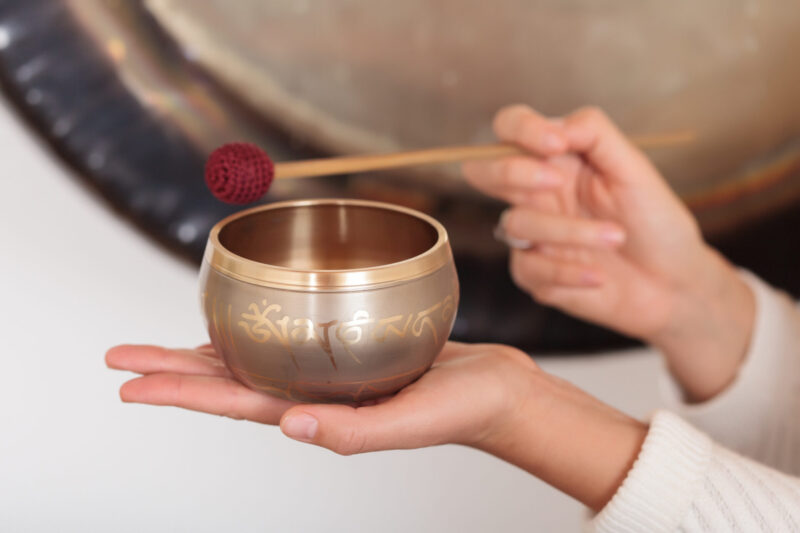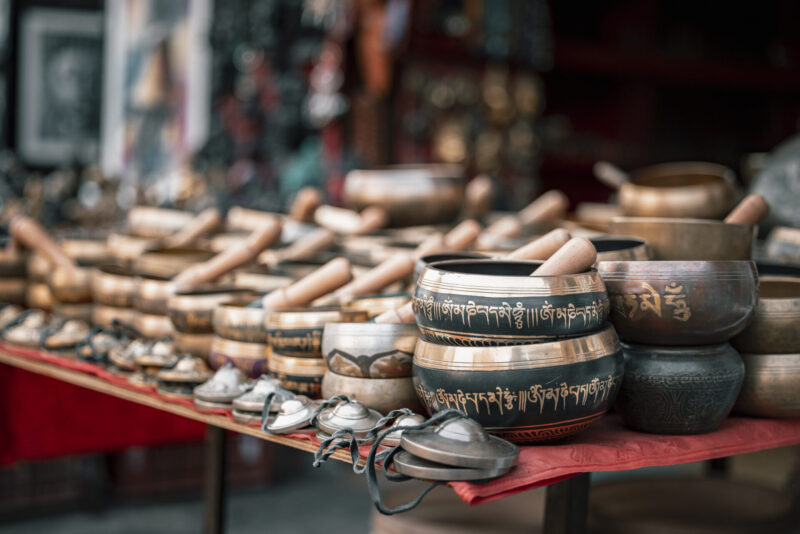Sound therapy, particularly using Singing Bowls, has deep roots in the spiritual traditions of Nepal. Originating over 3,000 years ago, it drew influence from the sound practices of Tibetan and Indian cultures, where sacred instruments like Tingcha Cymbals accompanied the meditative rituals of Hinduism and Buddhism. These instruments were integral in purifying the body’s 7 energy centers (Chakras), guiding practitioners through meditation, chants, and the creation of intricate mandalas.

At the core of sound therapy lies the understanding that everything in the universe, including our bodies, exists in a state of vibration. When negative emotions disrupt the body’s natural frequency, it creates an imbalance in both mind and body. The vibrations produced by the singing bowls help to restore harmony by aligning body cells and the body’s 7 energy centers with its natural rhythms. The process, known as brainwave entrainment, uses sound to guide the brain into states of relaxation, focus, and stress relief. Common instruments used in sound therapy include:










